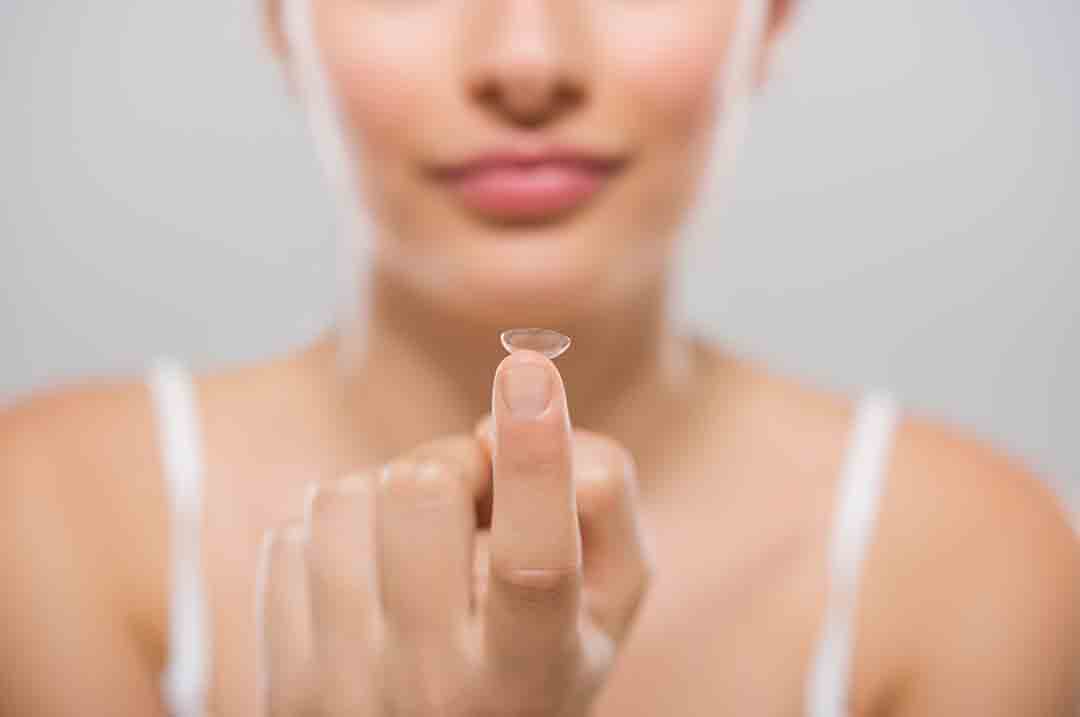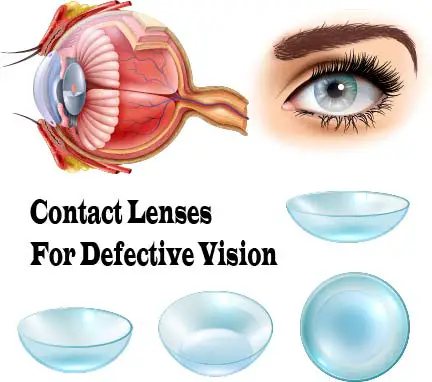Table of Contents
Myopia Vs Hypermetropia
Myopia vs Hypermetropia is a common vision-related question. Myopia, also known as short-sightedness, is a condition in which a person can see distinctly close objects but not faraway objects. Hypermetropia, also known as long-sightedness, is a disorder in which a person can see distinctly far away objects but fuzzy and abnormally close objects. These symptoms are not caused by excessive television viewing, electronic work, or book reading. These are simply birth defects that occur when the eyeballs’ shape and size are wrong.
What is Myopia: (Near-sightedness, also called short-sightedness)
Myopia is a common vision condition in which you can clearly see objects close to you but not so clearly or fuzzy objects far away. Light rays from far away objects focus in front of the eye, and the lens is unable to compensate. To focus the rays on the retina, a concave lens must be positioned in front of your eye. Near objects’ light rays are concentrated on the retina with no or little accommodation. As a consequence, even if accommodation is lost, the myopic eye can read without glasses.
Why a myopic patient can read closer objects?
Depending on the degree of myopia and the distance at which the object is held, light rays are concentrated on the retina with little to no accommodation. This is why, even in their later years, myopic people can read without glasses, while people without refractive errors need reading glasses.

The consequence of myopia?
The refractive strength of the lens is boosted by a particular form of nuclear sclerosis (cataract), making the eye more myopic. The reading vision of patients with these (nuclear sclerosis) cataracts may have improved. Retinal detachment, macular degeneration, and primary open-angle glaucoma are more common in patients with severe myopia(shortsightedness).
What is the treatment of Myopia?
Myopia can be easily corrected by an optometrist with prescription glasses or contact lenses designed to mitigate the symptoms of myopia. Myopia (shortsightedness) is corrected by inserting a concave (inwardly curved) lens in front of the myopic eye, which transfers the view back to the retina and makes it as visible as a normal person’s vision.
A pair of glasses or a pair of contact lenses may be used. Those that do not want to wear either of them may have Laser-assisted in situ keratomileusis surgery (LASIK).
The distinction between glasses and contact lenses is sometimes overlooked. Which of the two should he use? We’ll talk about it after we talk about hypermetropia.
Hypermetropia
Hypermetropia (farsightedness), also known as hyperopia.
The picture of a close object forms behind the retina in hypermetric condition. That means light is concentrated too far back in the eye, making near objects look almost blurry.
Light rays from infinity are brought to a focus behind the retina in the hypermetropic (farsighted) eye, either because the eye is too short or because the cornea and lens’ converging strength is too poor. By accommodating, a young longsighted (hypermetric) individual may achieve a clear retinal picture. Longsighted (hypermetric) people must accommodate even more for close vision.
Consequences of hypermetropia?
As the ability to accommodate worsens with age, the longsighted (hypermetric) person often needs glasses or lenses for both distant and close vision when previously none were needed. Since the patient has gone from not needing glasses to needing them for both distance and close vision, this could result in a report of eyesight loss. Because of their small eyes, longsighted people are more likely to have shallow anterior chambers and narrow angles, leaving them more vulnerable to closed-angle glaucoma.
What is the treatment of hypermetropia?
The Optometrist can easily correct longsightedness with prescription glasses or contact lenses which are already specifically designed to mitigate hypermetric results. Longsightedness is fixed by inserting a convex (curved outwards) lens in front of the hypermetric eye, which pushes the image forward and focuses properly on the retina, making it as visible as a regular person sees. You can use a pair of glasses or a pair of contact lenses. Those who don’t want to wear any of them can undergo a surgery named Laser-assisted in situ keratomileuses (LASIK).
The difference between myopia and hypermetropia are given below;
| Traits | Myopia | Hypermetropia |
| Definition | Myopia is a common vision condition in which you can clearly see objects close to you but not so clearly or fuzzy objects further away. | The picture of a close object forms behind the retina in hypermetric condition. That means light is concentrated too far back in the eye, making near objects look almost blurry. |
| Nature | Myopia causes a person to be able to see nearby objects clearly, but distant objects appear fuzzy. | Hypermetropia is a condition in which a person can see distant objects clearly but nearby objects seem fuzzy. |
| Image | The picture is created in front of the retina of people with myopia. | The picture is created behind the retina in the eye in people with hypermetropia. |
| Eyeball | In myopia(nearsighted people), the scale of the eyeball normally grows larger. | n hypermetropic (hyperopic) people, the size of the eyeball usually shrinks. |
| The focal length of the eye | The focal length of the eye lens shortens in myopia. | The focal length of the eye lens increases in hypermetropia (hyperopia). |
| Correction | Double-Concave lenses are used to correct myopia. | The Double-Convex lens is used to correct hypermetropia (hyperopia). |
| Lens | To fix myopia (nearsightedness), we must choose a lens that produces an image at infinity for an object at a distance. | When an object is positioned between the near point and the least distance of clear vision, we need to use a lens that forms an image of an object beyond the near point to correct hypermetropia (hyperopia). |
Now it’s time to discuss glasses and contact lenses.
Glasses
There are two main types of glasses. To fix nearsightedness or myopia, single vision glasses are used. Multifocal glasses are used to correct both far and close vision and are commonly worn by hypermetric.
- Bifocal: correction is given on the upper half of the lenses for distance and the lower half of the lenses for reading.
- Trifocal: It is divided into three parts. The top half is for distance vision, the bottom half is for reading, and there is a third region in the middle for particularly middle vision.
- Progressive lenses: They are both bifocal and trifocal in nature, but they lack a dividing line. The transition between those vision areas is smooth.
Previously glasses were made of only glass but now the companies also produce plastic. Plastic glasses are lighter but it is more likely to scratches than glass.
I always suggest using the lighter one, because you have to carry a glass the whole day on your nose. Nowadays, there are so many different features available with glasses, such as; fog proof, scratches proof, UV proof. Despite being expensive I like those features.

Advantage of using eyeglasses
Eyeglasses are simple to use. You simply put them on and walk away. You don’t need any special cleaning materials, and they don’t need much maintenance. You can choose from a wide range of frames to match your personal style. You won’t need to change your glasses as much if your vision remains unchanged. You still don’t have to touch your eyes. You can quickly take off and put on your glasses whenever you like. Wind, dust, and dirt, among other items, may be covered by wearing eyeglasses.
The disadvantage of using an eyeglasses
- Peripheral vision can be blurred if eyeglasses are positioned about 12mm (0.5 inches) from your eyes. When people first start wearing glasses or switching prescriptions, they often experience trouble concentrating on objects and partial blurry vision.
- Some people dislike how glasses make them look because they believe it masks their features or does not complement their facial aesthetics.
- If you have a serious disorder, your lenses’ edges may be thick and unappealing, or your glasses may make your eyes look unnaturally small or big. You might find it repulsive.
Heavy frames can cause headaches and pain by exerting constant pressure on your nose and behind your ears.
Contact lenses
In recent years, contact lenses have exploded in popularity. There are several forms, which we can divide into three groups.
- Hard lenses are made of polymethylmethacrylate (a form of plastic) and cannot be used with gases or liquids. They are one of the most difficult lenses to adapt to since the cornea becomes hypoxic when worn continuously. This type of lens is well-made and long-lasting due to its rigidity. This type of lens is less likely to cause infection or allergy. While they are no longer widely prescribed, many people have been wearing this form of lens for many years with no problems.
- Gas permeable lenses have both hard and soft lens properties. They are better tolerated than hard lenses because they allow air (oxygen) to pass through to the tear film and cornea. They correct refraction error better than soft lenses because they are semi-rigid. However, they are more susceptible to deposit accumulation and are less durable than hard lenses. The majority of people use gas permeable lenses on a regular basis.
- Soft lenses absorb a lot of water and are permeable to both gases and liquids. They are much more comfortable to wear than hard or gas permeable lenses, and they can be worn for longer periods of time. Infections and allergies are becoming more frequent. The lenses are less stable, more susceptible to deposits, and do not fix refraction errors as effectively as hard lenses. However, due to their high tolerance, they are the most commonly prescribed lenses.

Advantage of contact lenses
- Contact lenses adhere to the eye’s curvature, giving you a broader field of vision and fewer vision distortions and obstructions than eyeglasses.
- If you’re playing sports or exercising, contact lenses don’t bother you.
- Contact lenses aren’t going to deal with what you’re wearing.
- Color contact lenses can be used to see how you will look with different eye colors. Many models use contact lenses to enhance their appearance.
Disadvantage
- Some people have difficulty putting their contact lenses in their eyes.
- Contact lenses minimize the amount of oxygen (air) that enters your eyes, which may exacerbate or worsen dry eye syndrome.
- If you spend a lot of time in front of a monitor, wearing contact lenses on a regular basis can cause a condition called computer vision syndrome.
- To prevent potentially harmful eye infections, contact lenses must be washed and cared for on a regular basis. If you don’t have time to do so, you can have to resort to using disposable lenses on a daily basis. You’ll have to pay extra for this.
- When you wake up with your eyes dry, swollen, and annoyed because you fell asleep while wearing everyday wear contacts. You can experience a few allergic symptoms at times.
Conclusion
If you want to know which one do I prefer? I would suggest eyeglasses. It has the fewer amount of side effects and complications. I am personally using eyeglasses since 6th grade. I like them.
If you don’t want to use any of them, you need to know about ocular surgery.
Thank you for reading.
Migraine is common in myopic patients. If you want to learn about Migraine please read this article.
Last Updated on February 23, 2022 by Learn From Doctor Team







